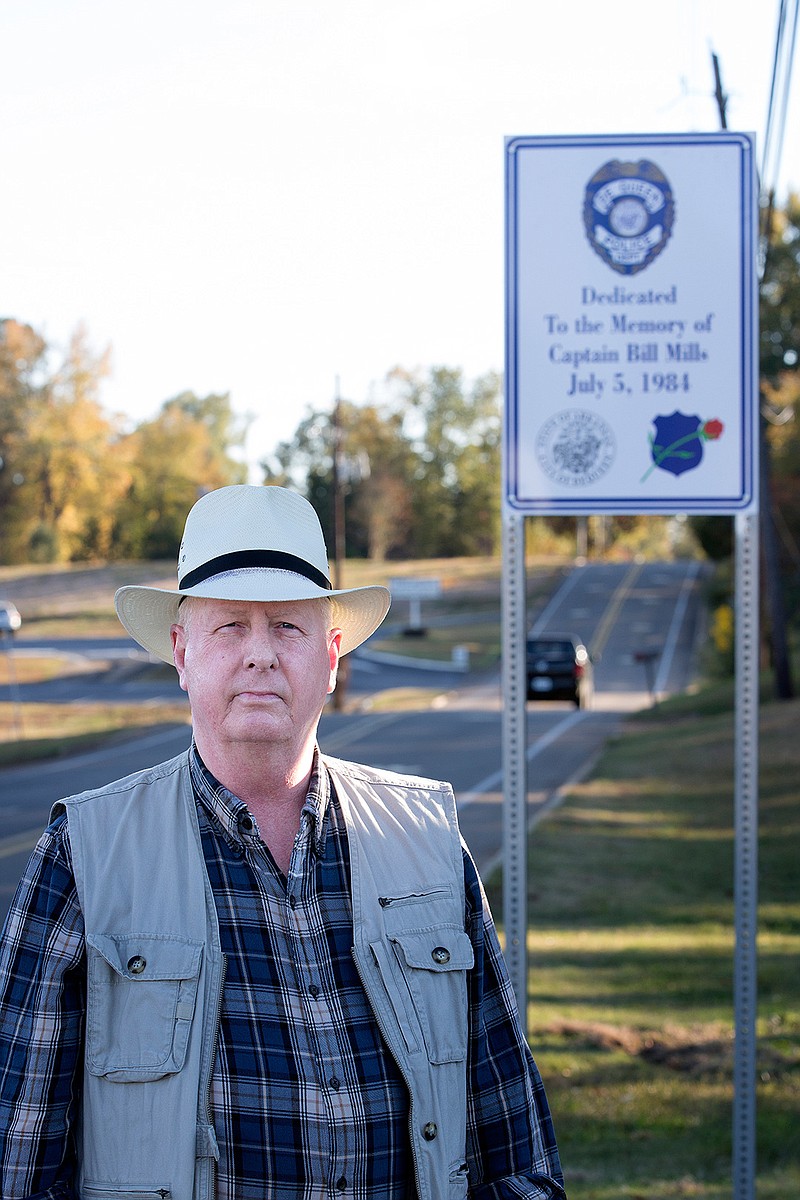After 32 years, four De Queen, Ark., policemen who were killed in a funeral procession wreck have been memorialized by the city of De Queen for dying in the line of duty.
Photo Gallery
Studio Joe's
Celtic music and coffee... at Smokey Joe's Coffeehouse in West Little Rock on Thursday, January 10.
The deaths of the four policemen were part of a bizarre series of events that didn't end until the execution of the man who murdered an Arkansas State Police trooper and a Texarkana, Ark., pawnshop owner.
The policemen were killed because of a wreck while the officers were traveling from De Queen to the funeral of Arkansas State Police Trooper Louis Bryant in Texarkana, Ark.
Until recently, there has been no memorial honoring themen, said former De Queen Police Chief Jim Smith.
The officers killed in the collision were Capt. William Mills, Sgt. Roy Brewer, Patrolman Bill Gilham and Patrolman Herman Jones.
"We tried to honor the officers, but the idea never got traction. We got busy trying to rebuild the Police Department and put things back together. Life went on and we never memorialized those guys," Smith said.
The streets honoring the officers were not renamed, but memorials were placed on the street signs. The four streets dedicated in memory of the officers are Third, Fourth and Ninth Streets and College Avenue.
The chain of fatal events started when Trooper Bryant, 37, was killed during a traffic stop about 5 miles east of De Queen on U.S. Highway 71.
Richard Wayne Snell, the man who fatally shot Bryant on June 30, 1984, fled the scene and about an hour later was captured in a shootout with Broken Bow, Okla., police.
Bryant's wife found his body in front of his patrol car. She was traveling from Texarkana to De Queen to have lunch. She recognized her husband's vehicle by his identification license and stopped. She tried to perform CPR, then got on the police radio and called for help.
Bryant had been shot twice, with one bullet piercing his lung and heart.
Bryant's funeral was going to be conducted July 5, 1984, in Texarkana, Ark., and while traveling to the funeral, a De Queen patrol car was hit by a tractor-trailer on U.S. Highway 71 south of Ashdown, Ark.
The truck driver, George McCoy, 46, of Dubberly, La., saw the procession just south of Ashdown and hit his brakes to slow down during the rain. The tractor-trailer jackknifed and the trailer hit the patrol car, shearing off the top of the car and killing the four officers.
Snell received life without parole for the murder of Bryant.
He was later convicted and sentenced to die for the murder of pawnshop owner Bill Stumpp. The weapon used to kill Bryant had been stolen during the pawnshop robbery and murder. Police were able to link Snell to Stumpp's murder, which had gone unsolved for two years.
Snell remained on death row until April 19, 1995, when he was executed, the same day as the bombing of the Alfred Murrah Federal Building in Oklahoma City. Because of Snell's ties with militia, early investigations looked for a link between the bombing and Snell's execution, but nothing was confirmed, according to published news reports.
Smith, who is now retired as police chief, was part of the law enforcement caravan going to Bryant's funeral and was a couple of cars behind the De Queen patrol car carrying the four officers.
He saw the collision.
"At first I was stunned. I could see what happened and thought it wasn't real. Car parts and debris were flying everywhere. I finally got my car stopped and could see what had happened," Smith said.
"Then I was in shock and anger, and then I started to grieve," Smith said.
"I had to keep functioning as a policeman. I didn't have the luxury to sit down in the middle of the road and cry," he said.
"It was clear to me there was nothing to be done for those guys. My job was to hustle the wives to the hospital. The wives had been riding in another car in the caravan. We took them to the hospital (Little River Memorial Hospital in Ashdown). Some of the men's relatives were also on their way to the funeral in Texarkana and we intercepted them because we didn't want them to see what happened to their husbands," Smith said.
"It was a tough year in 1984. I was the first officer on the scene when Louis was shot. I had been talking to Louis on the radio before he got shot. There was nothing I could do," he said.
"I went to 13 funerals of law enforcement officers in Arkansas who had died in the line of duty in 1984," Smith said.
"Sometimes there is more sadness than you can bear. You show up for the families who need support and be there for them," said Smith, who served 15 years as De Queen police chief and as Arkansas parole officer for another 10 years. He also worked for the sheriff's department prior to joining the De Queen Police Department.
Smith said law enforcement has become more sophisticated through technology.
Communication was almost void in the location where Bryant made the traffic stop with Snell south of De Queen.
Bryant wrote information about the traffic stop on a notebook.
"The communication was woefully inadequate," Smith said.
It was not uncommon, if an officer needed help, to stop at a business or residence and ask to borrow a telephone to contact the dispatcher in Hope or De Queen, Smith said.
"People came to us after the shooting and said, 'What do you need?' I told them we needed better communications. That was a real issue in that day and time," Smith said.
"It brought a lot of attention to law enforcement in rural areas," he said.
Today patrol cars are equipped with computers and the officer can know the background of the vehicle through state registration and information from the National Crime Information Center computers.
The officer making a traffic stop today can pull up information about the possible criminal history of the driver.
Few officers in 1984 had bulletproof vests, and now the vests are standard equipment.
Bryant was not wearing one when he was fatally shot.
The De Queen police rewrote procedures after the deadly wreck: No longer will four officers be allowed to ride in the same patrol car.
"We learned a lot from those days," Smith said.


